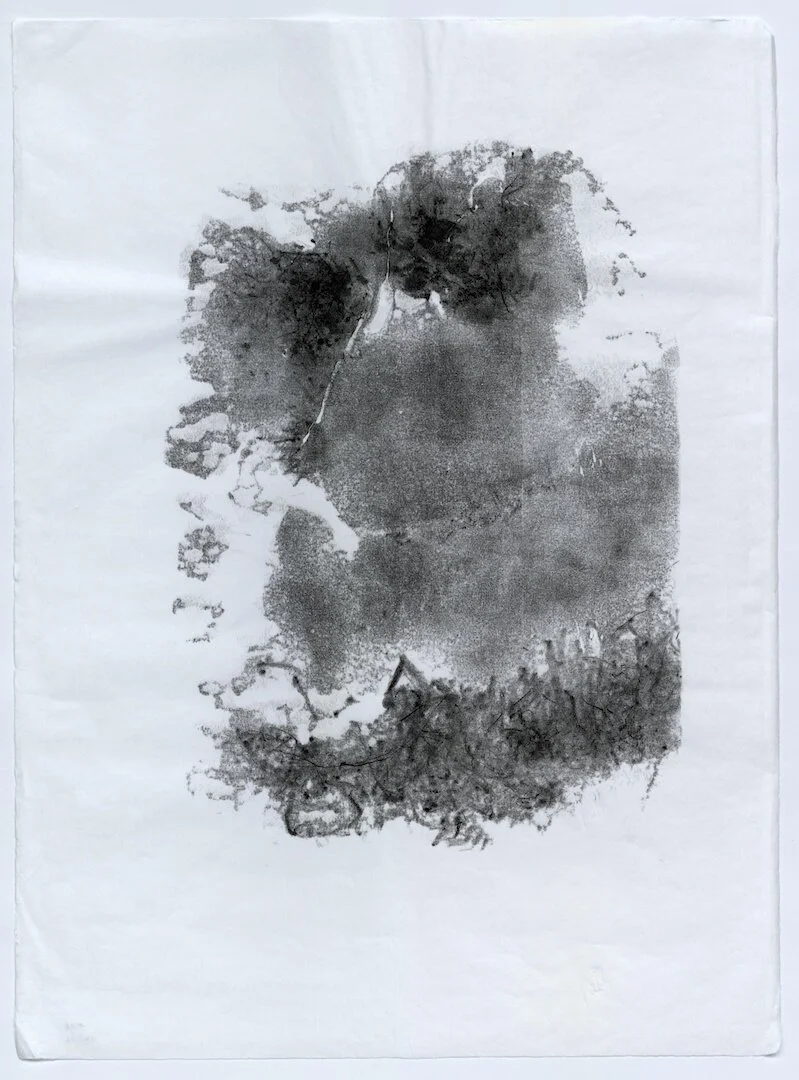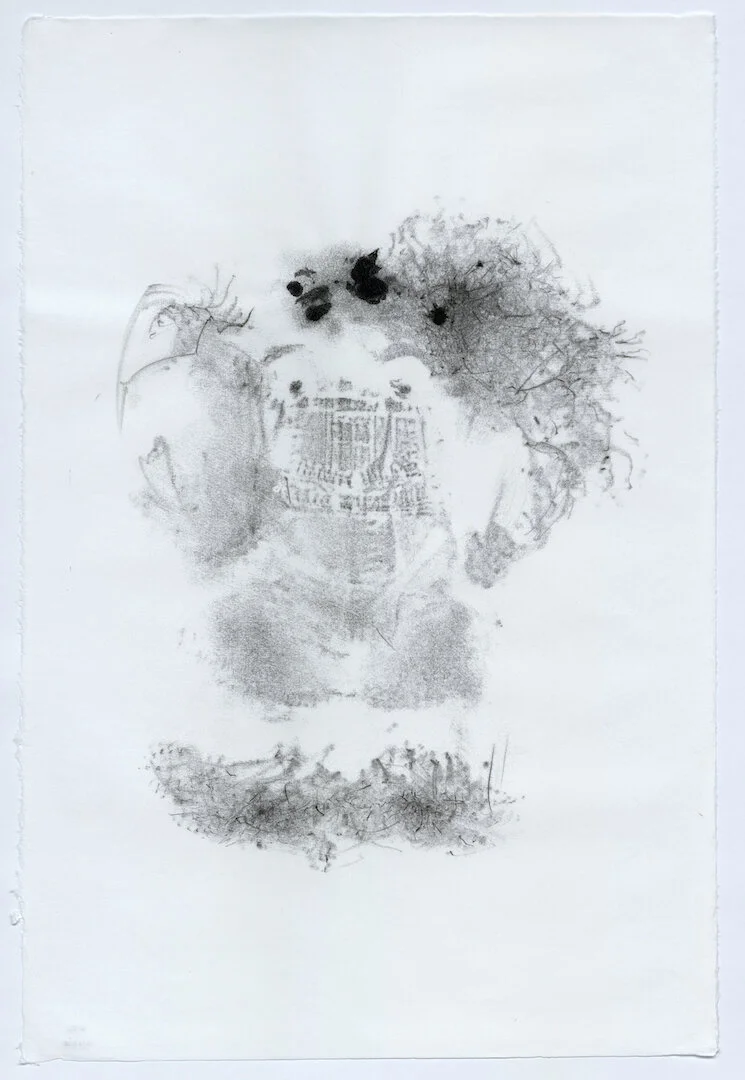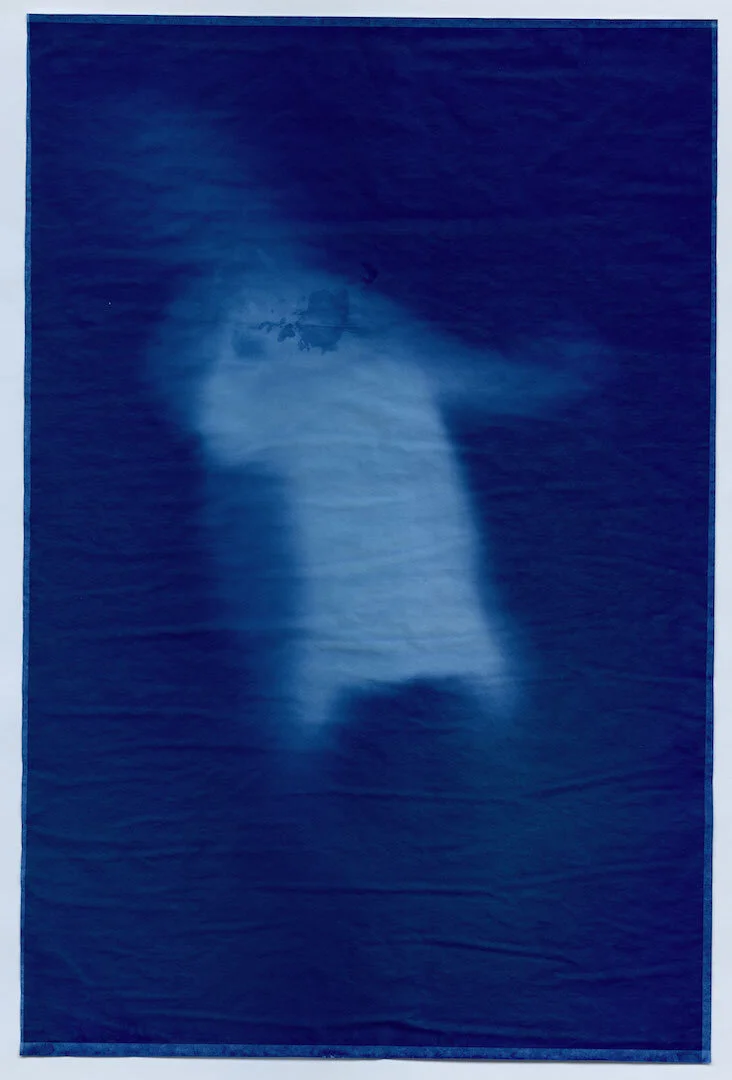BABY PICTURES (and other works)
Monotype prints, video installation, custom tile floor, baby flash mob, custom diapers in collaboration with Imin Yeh
2013
In BABY PICTURES, Namkung explores what it means to document, represent and preserve images of his infant son, holding tension between his fatherly desire to capture moments in time and the futility of doing so.
Exhibited at The Patricia and Philip Frost Art Museum, Miami, FL; and FAT Village Projects Contemporary Art Space, Ft. Lauderdale, FL More info below.
BABY PICTURES began in the fall of 2012, when my son Clyde was eleven weeks old. It is important for babies to spend time in the prone position, in order to develop the balance, coordination, and musculature needed to lift the head, to roll over, to sit up, and eventually to crawl. I designed a monotype printmaking system to capture the ways in which he moved his body in relationship to the ground plane. In effect, I was attempting to implement a form of Drawing Gym at beginning stages of life, to register physical effort and development in the form of drawings, when babies are first learning to move. In the end, however, what I found myself documenting was not only the physical development of my son through a form of portraiture, but also my own efforts to make sense of my identity and role as a father. I began to view our collaborative printing process as an imprinting process of father-son attachment, as a ritual that strengthened our filial bond. The work would need to end naturally, when Clyde gained the independence and the agency to leave the project on his own. Our final pieces were over in seconds, as he crawled straight off the paper. In the end, there were over 70 drawings that spanned over eight months. Displayed here are 26 drawings that were exhibited in the fall of 2013 at the Frost Art Museum in Miami, Florida, along with documentation of several other related projects that accompanied the exhibition.
Last night I scraped the dried ink from the plate and slid the shavings into a manila envelope. After cleaning the plate, I centered a new sheet of paper on the frame, hinged it down with tape along one edge and pulled back the paper. This morning, Clyde was done sleeping at a quarter to six. After soothing him and changing his diaper, we keep ourselves busy with cooing, singing, and playing quietly while we wait for Mama and Iris to wake up. Getting the timing right to ink the plate is tricky, so I need to check in with Mama, and I wait to do so until she has a cup of coffee in her hand. If I try to place Clyde on the hard plexiglass surface when he is hungry, tired, or needs his diaper changed, he will protest. There are small windows between nursing, eating, pooping, playing and napping that I must use efficiently. There are constant unknowns that can throw the plan off-track.
Through trial and error, I have learned that the ideal amount of time to leave between inking the plate and making the print is approximately two hours. Although there are other variables. The first is the ink. Each day, I try to measure out roughly the same amount of ink, by eyeballing a scoop onto the pallet knife. Then I roll it out on the plate to get an even tack, and wait. If we make the print too soon, the ink may be too wet and smudgy, and the subtle differences in his pressure and movement are easily lost. But wait too long, and the ink is too dry to register a clear print. Changes in temperature and humidity make a difference, too. It’s hot today, the AC runs intermittently and air circulation in the room speeds drying time. At the same time, South Florida’s humid climate slows drying time. I am trying to strike a balance between the readiness of the plate with the readiness of my son to perform his task. I check the tack often, dabbing it with a fingertip.
Again, I check in with Mama. Today, there is a change in the schedule and she asks hurriedly, “Can you do it right now?” I shuffle into the studio and tape the paper down onto the frame so that it hovers a quarter inch above the inked surface. I pick up Clyde, and begin baby voicing about how much fun it’s going to be to do his drawing with Daddy. This is our special father-son time. I set him down carefully in the center of the paper, prone. He pushes both hands against the surface, scraping paper pulp with his fingernails as he reflexively grips at it, lifting his head to look around. Head lifting is a new and exciting skill, and I praise him. I get down to his level to talk with him. Yesterday he stayed on the paper for 9 minutes.
Not today. He looks straight at me and is making a face that says I’m getting ready to cry. So I try to head him off by dancing like a monkey—a hollering and gesticulating performance that I hope will distract or entertain him. It works; he is momentarily transfixed by my antics. But there is a stronger force moving him now, and he is vetoing suddenly and at high volume. My heart rate jumps, and now both of us are in stress. I pick him up carefully and cuddle him tightly against my neck. I carry him out of the studio, feeling his heat, and feeling a vague guilt. At this moment, neither of us knows why we’re doing this. I pull his cheek to mine, stroke his back and murmur into his ear, “It’s ok Clydey…I’m sorry Buddy…I’m sorry…it’s ok…” But his protest drowns me out.
December 2012
Thank You For Changing Me - Custom Hand Printed Diapers by Imin Yeh
Custom Foam Tile Floor
Ink Bed Installation
Baby Flash Mob (Museum Intervention)
Drawing Gym Activities
Baby Picture Making Activities


































